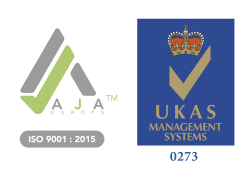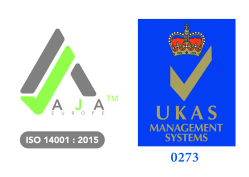How Safe Is Working on Ladders?
When doing any work at height, whether it be at home or in a workplace, many people don’t take the risk seriously – unless something happens to them personally. It’s because of these risks that ladders should generally be considered a last resort when it comes to working at height.
Falls from height account for a significant number of workplace injuries and unnecessary deaths each year in the UK, which is why the Work at Height Regulations 2005 (WAHR) state that you should only use ladders if you have to rule out all other safer alternatives for work at height. There may be certain circumstances where your only option of working is by using a ladder.

Things to Consider When Working On Ladders
Here are a few tips to follow when working on ladders.
• Follow the Work at Height Regulations 2005 to promote best practice.
• Plan and control any work that you will complete at height to reduce the risk of injury.
• Seek knowledge and guidance from the HSE, who can provide valuable information on how to prevent falls from height.
When practising safe ladder use, consider the four elements of ladder safety.
• The type of ladder
• The activity
• The site
• The user
Ladder or Step Ladder?
You’ll need to identify whether you need a step ladder or a ladder to perform the work at height. You may need an extension ladder or may need to stand on the top step of a ladder platform. To identify the ladder type best suited to the activity, consider the following.
• Activity – you must consider whether you can carry out the work safely by using a ladder. Does the task require you to use both hands? If so, can you use both hands without leaning away from the ladder? How long will the task take to complete? Will it be repetitive?
• Site – what are the site conditions? Will there be large volumes of pedestrians and/or vehicles? Will weather conditions (such as high winds, rain, cold or heat) affect the work? You need a thought-out plan and a comprehensive risk assessment in place before starting any work in public areas.
• The user – are you trained in the use of ladders? Are you able to competently/confidently work at height? Will the combined weight of you and any tools or equipment exceed the ladder rating?
You need to also consider:
• Types of ladders, including domestic ladders
• Load ratings
• Required checks, inspections and maintenance
Classification of Ladders
There are three main classifications of ladders:
• Class 1
• Class EN131
• Class III
Each classification indicates the safe working load that a ladder is designed to support. The value of the safe working load is intended to cover the weight of a single person and their equipment. The value is also referred to as the 'Maximum Static Vertical Load'. You can find the ratings on the ladders themselves. If you can’t find the rating, you shouldn’t use the ladder. The rating is the highest figure printed on the ladder. This is the maximum weight – of both the user and materials – that the ladder can hold while in a working position.
The colour of the feet does not classify the type of ladder. It’s the colour of the label that classifies the ladder.
• Class 1 – industrial ladders have blue labels.
• EN131 – there are no colour label requirements for these ladders. However, EN131 ladders that have replaced Class 2 ladders have yellow labels.
• Class 3 – domestic steps have red labels.
There is no CE (Conformité Européene) mark on EN131 ladders because this is not a harmonised standard.

The ETD Working at Height Course
For more information on hazardous substances, you can complete ETD’s online Basic Ladder Awareness course. Follow these five simple steps to get started.
• Create a free company account or single user account, selecting the £12+ VAT payment scheme.
• Purchase your user accounts using the online Elavon platform.
• For company accounts, create your user accounts (using unique usernames) and “activate” each user by pressing the “activate” button.
• Purchase your online training by selecting the courses that you require. Ticking a course will instantly assign it to the user’s account.
• Once the courses have been assigned, single users can access the course under “my courses”. Company users can log into their account, go to “my courses” and start the training.
If you require any assistance with the online training, then please contact our support team, who will be happy to help.







